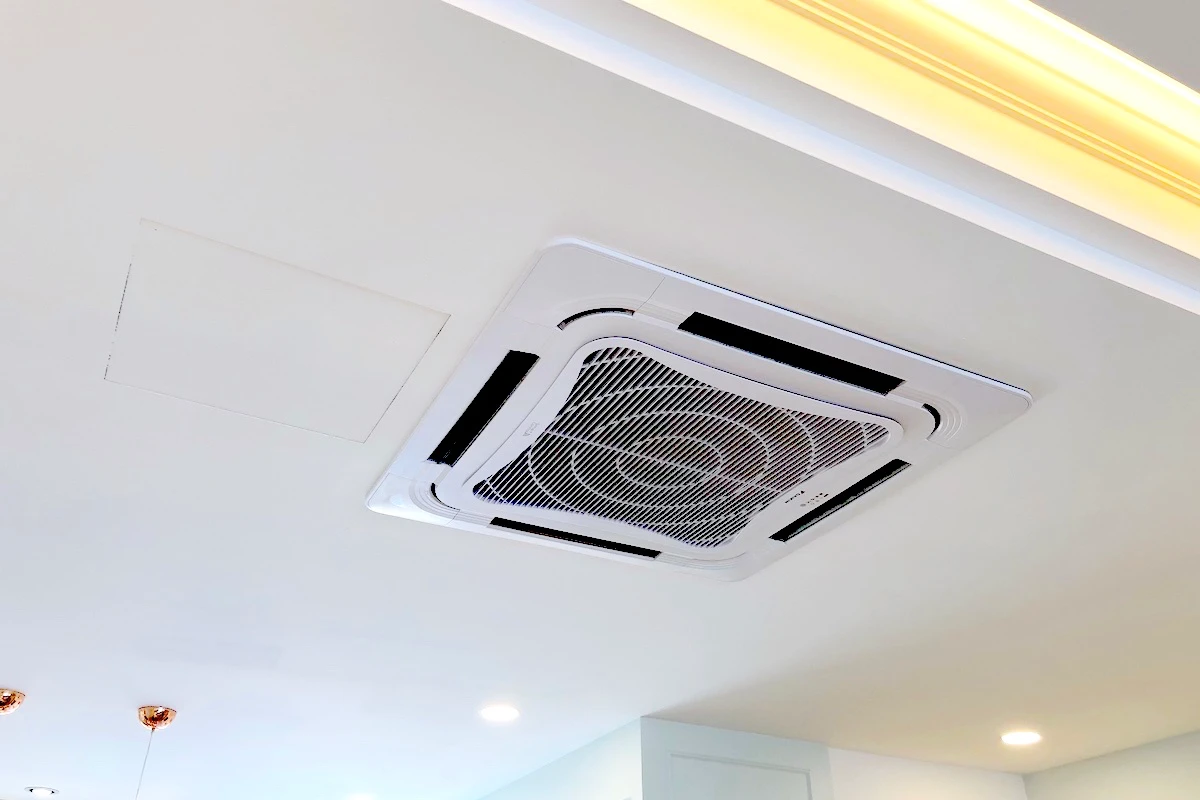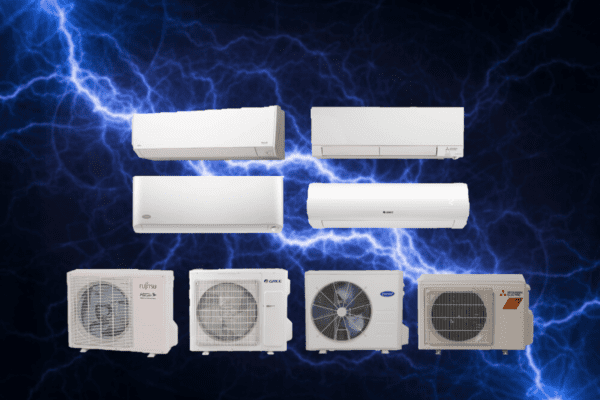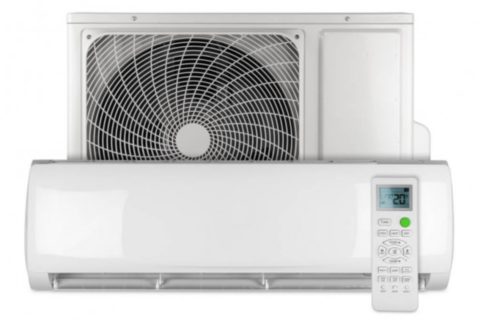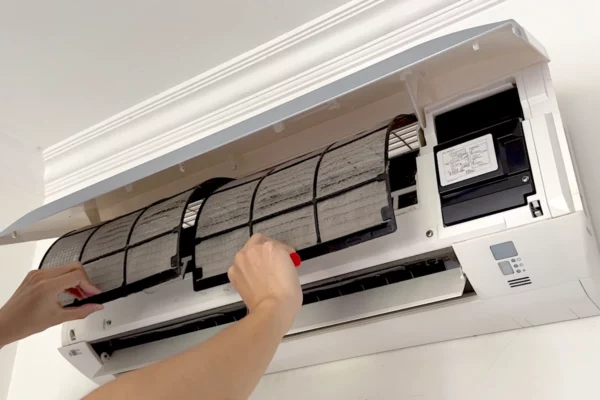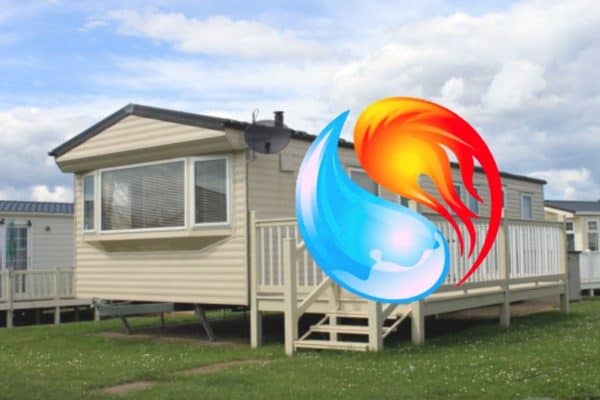How Ceiling Cassette Mini Splits Work
Ceiling cassette mini splits are one of the different types of mini splits. They work differently from other types of mini splits. Some people are considering a ceiling cassette mini split but they want to know how it works. So, I’ll explain.
Ceiling cassette mini splits work by supplying air in multiple directions for uniform air distribution. The air is then returned via the center return grille where a washable filter can be found. A fresh air duct can be connected to the ceiling cassette mini splits to introduce clean fresh air into the space.
Ceiling cassette mini splits offer much more functionalities than wall-mounted mini splits. Understanding how ceiling cassette mini splits work can help you make an informed decision.
How Mini Splits Work
A mini split consists of two separate units known as the indoor unit and the outdoor unit.
The indoor unit is also known as the evaporator or the air handler while the outdoor unit is also known as the condenser or the compressor.
Most mini splits today can heat and cool, regardless of their types.
In cooling mode, the indoor unit is responsible for heat absorption and the outdoor unit is responsible for heat rejection. In heating mode, their responsibility reversed.
The mini split system transfers heat between the indoor unit and the outdoor unit via the refrigerant line.
You can choose from a few types of indoor units based on your preferences and applications. The 5 types of mini split indoor units are wall mounted, ceiling cassette, ceiling ducted, floor standing and floor mounted.
Each type of mini split indoor unit has its own unique features and applications. To find out more, kindly read my other blog post titled: 5 Types of Mini Split Indoor Units (How to Choose).
In this blog post, we’ll dive deeper into the ceiling cassette type of mini split indoor unit.
How Ceiling Cassettes Work
A ceiling cassette unit mainly consists of a front panel, a cooling/heating coil and a blower fan.
The front panel of a ceiling cassette unit typically has 4 supply air vents shown as A, B, C & D in the below photo:
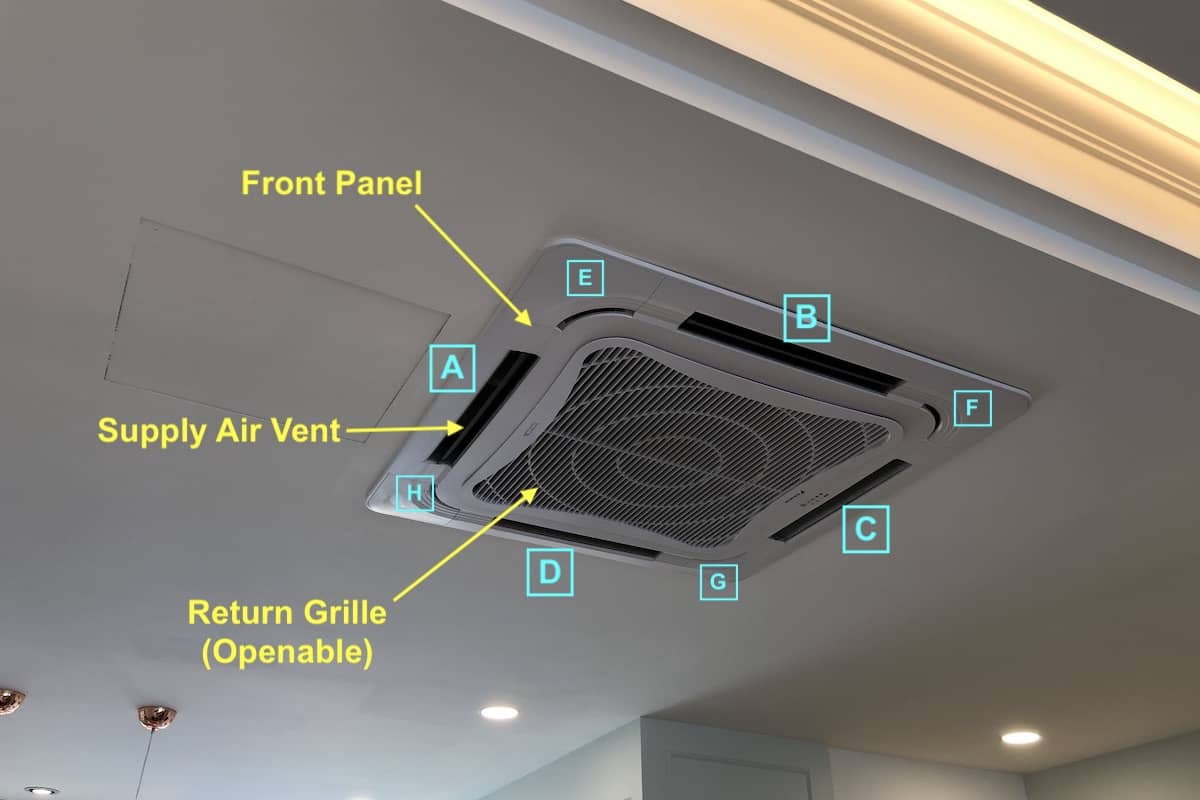
In addition, some ceiling cassette units have additional supply vents at locations E, F, G & H (the corners). Then, the center of the front panel is an openable return grille for return air. Within the return grille, a washable filter can be found.
By removing the front panel, the drain pan can be seen at the back as shown in the below photo:
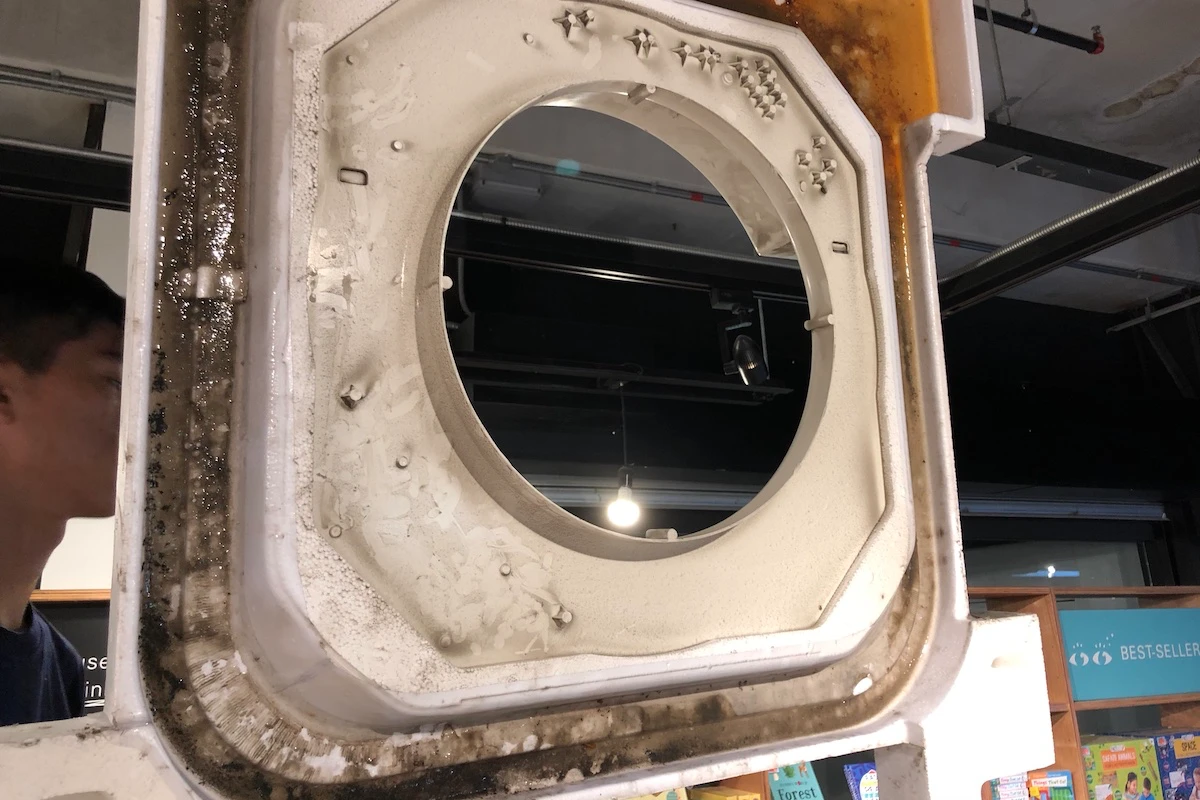
The drain pan channels the condensate water to a corner where a condensate pump will suck the water out of the drain pan and discharge it through the external drain pipe.
Inside the ceiling cassette body is a fan blower and a large cooling/heating coil as shown in the below photo:
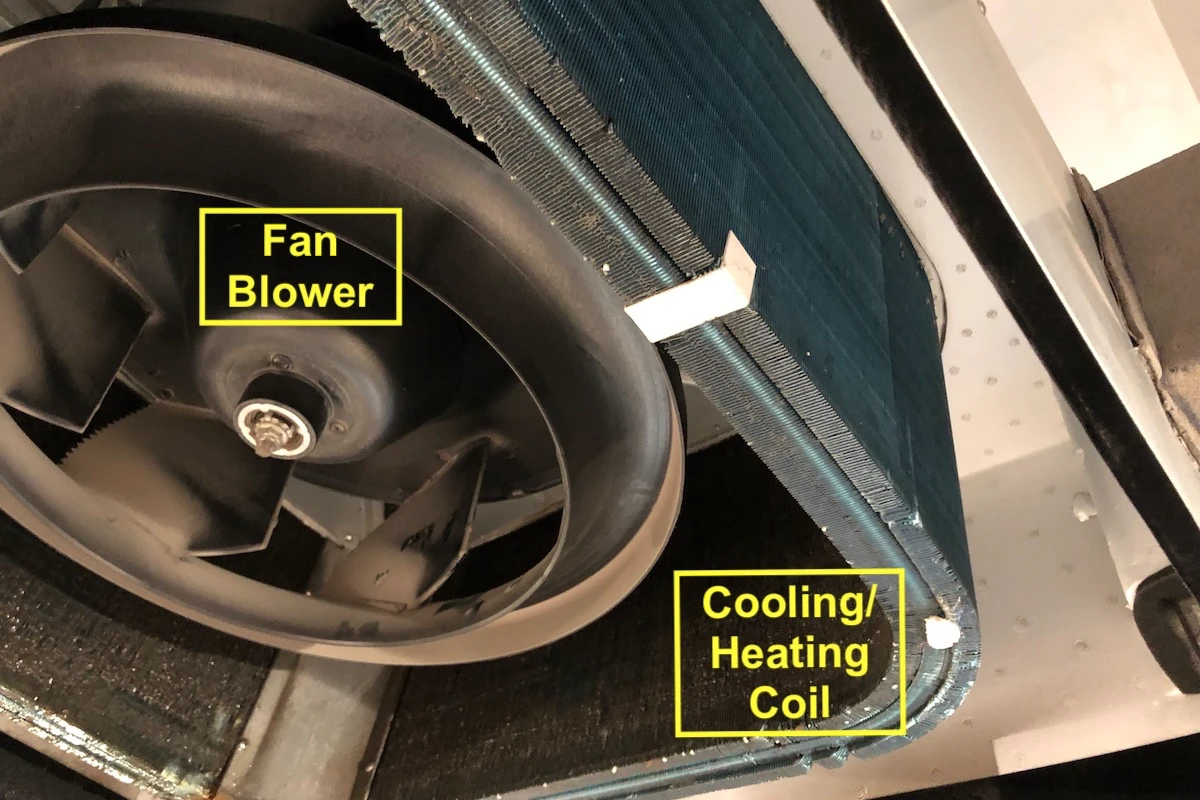
As the fan blower spins, the air is drawn through the center return grille and forces through the cooling/heating coil. You can see from the above photo that the inner part of the coil is dirty.
After the air is forced through the coil, it is channeled by the casing of the ceiling cassette unit to the individual supply vents and discharged through the front panel as shown in the earlier photo.
At the corner of the body of the ceiling cassette unit, there is an opening for a fresh air connection. A fresh air duct can be attached to the ceiling cassette unit to bring in the outside air as shown below:
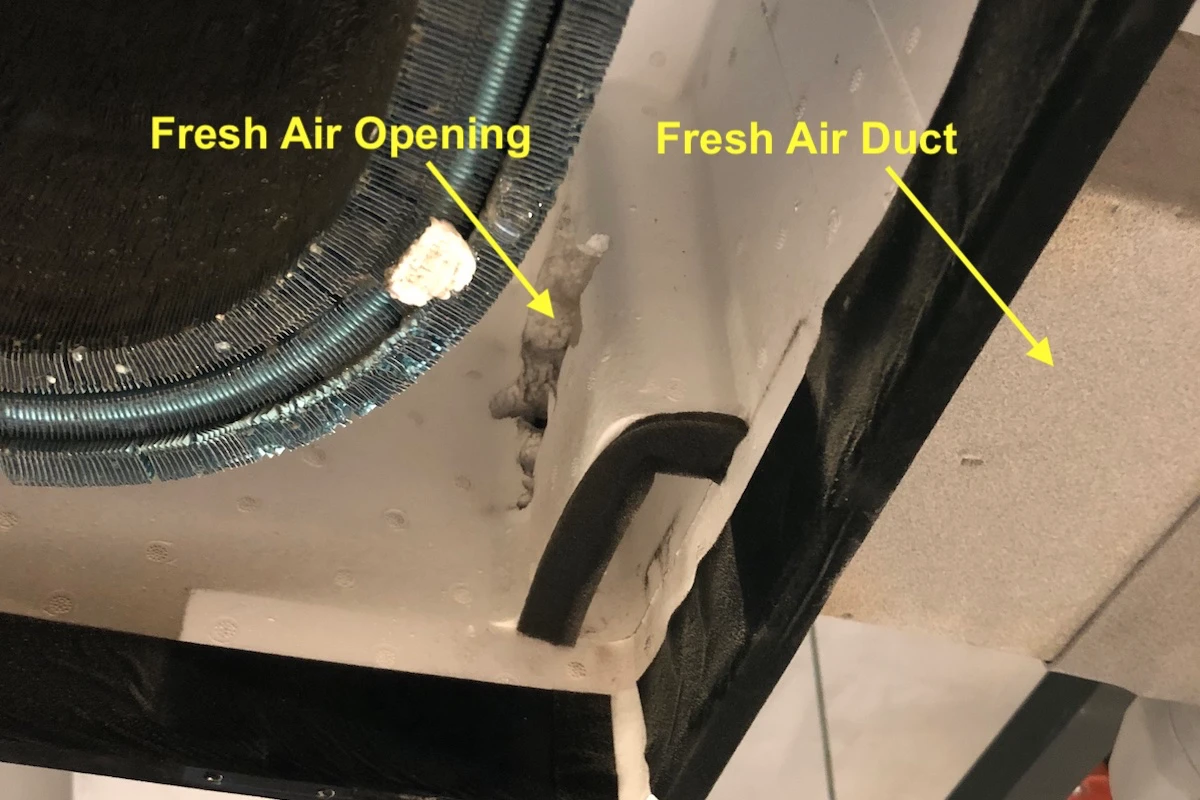
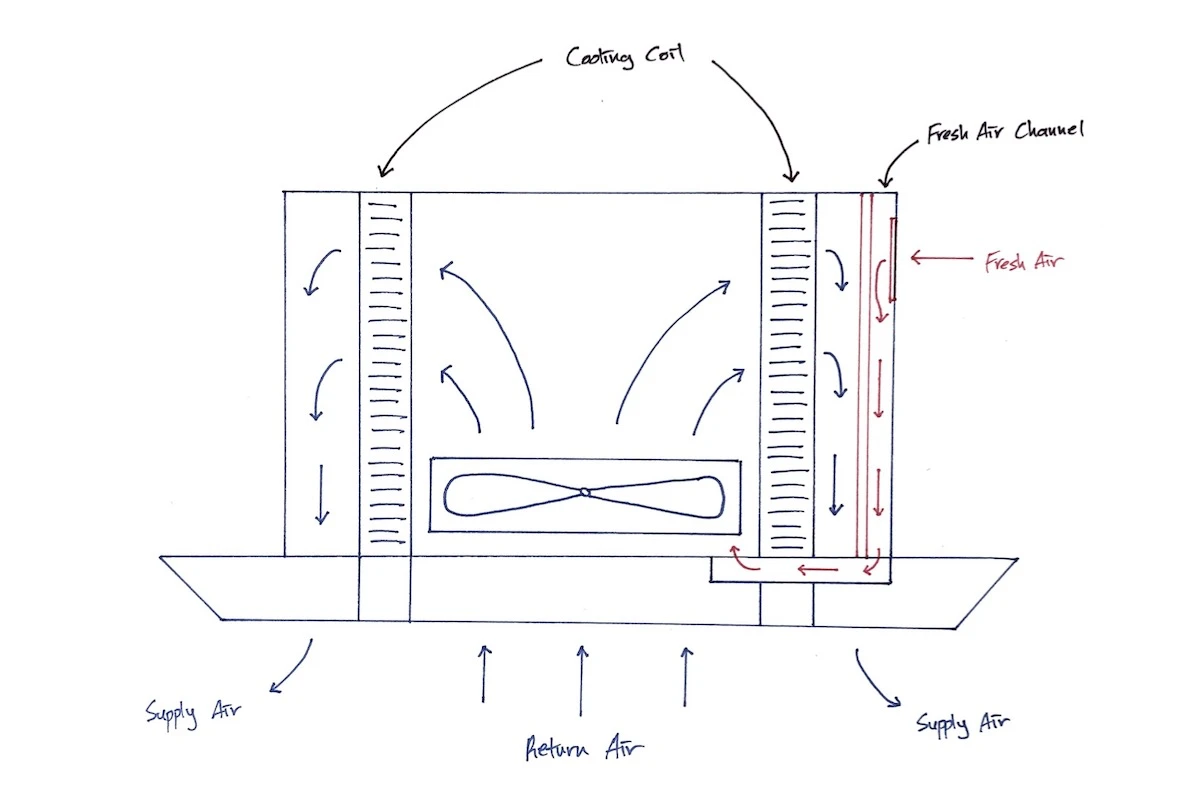
These photos are taken when I was handling a project that involves more than 50 numbers of ceiling cassette units at once. We need to remove the front panel to access the cooling coil for cleaning purposes.
By the way, if you want to learn more about mini split especially how to design it for your house, consider my Mini Split (eBook). You’ll learn what is Mini Split, how to choose and more importantly, spark more design ideas to improve the energy efficient of your house. But, if you need a second opinion or want someone to help you design, then you can consider my consultation service.
Consultation Service
Ask me for HVAC advice such as brand selection, best model, benefits, features, placement, duct size, grille size, how to design, design check, verification and other HVAC related queries.
Ceiling Cassette Mini Split vs Wall-Mounted Mini Split
Ceiling cassette and wall mounted are two different types of mini split indoor units. While I’ve dealt with many ceiling cassette units, I’ve done more with wall-mounted units. Following are the differences between a ceiling cassette mini split and a wall-mounted mini split:
- Cost
Ceiling cassette mini splits are more expensive to purchase and install than wall-mounted mini splits. - Installation
Ceiling cassette mini splits are installed on the ceiling while wall-mounted mini splits are installed below the ceiling. - Maintenance
Ceiling cassette mini splits are more difficult to do service and maintenance while wall-mounted mini splits are easier. - Efficiency
Wall-mounted mini splits are more energy efficient than ceiling cassette mini splits. - Features
Wall-mounted mini splits offer more functions and features than ceiling cassette mini splits.
In short, wall-mounted mini splits are overall better than ceiling cassette mini splits. However, the best thing about ceiling cassette mini splits is that they are concealed above the ceiling. This greatly improves the interior aesthetics of a house.
Pros and Cons of Ceiling Cassette Mini Splits
Ceiling cassette mini splits are a unique type of mini splits. While they may not be appealing when compared to wall-mounted mini splits, they are still advantageous in many ways.
Pros of Ceiling Cassette Mini Splits
- Provide uniform air distribution without ductwork.
- Available in larger capacitiy than wall-mounted mini splits.
- Able to introduce fresh air.
- Concealed above the ceiling; elegant looking.
- Longer drain line thanks to its built-in condensate pump.
Cons of Ceiling Cassette Mini Splits
- More expensive than wall-mounted mini splits.
- Less efficient than wall-mounted mini splits.
- Difficult to install and maintain.
- Required a ceiling manhole for service access.
- Not much choice.
If you’re looking for something concealable, ceiling cassette mini splits are great. They are the cheapest option in terms of concealed mini splits. Otherwise, you’ll be looking at ducted mini splits which can be pricy in all aspects.
FAQs about Ceiling Cassette Mini Splits
- Do Mini Split Ceiling Cassettes Have Condensate Pumps?
Mini split ceiling cassettes are installed near the ceiling level. The condensate water doesn’t have enough gradient to discharge via gravity flow. Hence, there is a built-in condensate pump inside each mini split ceiling cassette to aid the condensate water discharge. - Can You Duct to a Mini Split Ceiling Cassette?
Mini split ceiling cassettes do not require duct. However, they have openings for a fresh air duct. So, if you want to introduce fresh air to your house, you may duct to a mini split ceiling cassette. - Where is the Best Place to Put a Ceiling Cassette Mini Split?
Mini split ceiling cassettes are designed to be placed in the middle of a room. Most of them supply air in 4 different directions. For 2-way mini split ceiling cassettes, the best place for them is near the wall where the air can be thrown to the end of the room.
Lastly, consider my Mini Split (eBook) if you want to know how can you use Mini Split in your house. If you still have doubt or not feeling confident enough, feel free to consult me.
Consultation Service
Ask me for HVAC advice such as brand selection, best model, benefits, features, placement, duct size, grille size, how to design, design check, verification and other HVAC related queries.
If you have anything to add (or ask) about this topic, leave a comment down below!


